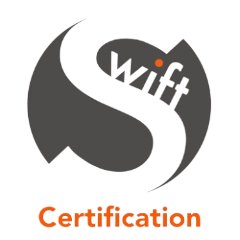In today’s competitive business landscape, achieving ISO certification can significantly boost your company’s credibility and operational efficiency. However, navigating the…
ISO Certification refers to the process of achieving a formal verification by a certification body that an organisation’s management system meets the standards set forth by the International Organisation for Standardisation (ISO). These standards provide a framework for best practices in various aspects of an organisation’s operations, like quality management, information security, Health & Safety or environmental sustainability.
Certification can be a useful tool to add credibility, by demonstrating that your management system and service meets the expectations of your customers. For some industries, certification is a legal or contractual requirement.
Each ISO Certification has huge benefits including:
ISO Certification costs vary depending on your business, we offer competitive pricing and a unique client led approach to our auditing services. Contact us today for a FREE, no obligation quote – Call us on 0161 470 5352 or fill out a form here and a member of our team will be in touch
Preparation
One of our expert auditors will contact you and discuss your audit plan, answer any questions you have and ensure you have all the information you need.
Initial Stage One
The first assessment is to conduct a documented review of the management system you have in place and identify the areas that require improvement or potential nonconformities at the stage two assessment that could affect your gaining certification.
Our auditors will then issue a full report highlighting the areas for improvement in preparation for the next step.
Initial Stage Two Assessment
Once you are ready, we will review the changes you have made following your stage one assessment and take further sampled evidence of the management system to determine if you have met the requirements of the chosen ISO Standard. Our auditor will then highlight any areas for improvement or nonconformances that need correcting.
Annual Review – Surveillance
As part of the ISO Certification, you are required to have an annual surveillance visit to ensure you have maintained compliance. The objective of this is to ensure your Management System has continued to fulfil requirements.
In today’s competitive business landscape, achieving ISO certification can significantly boost your company’s credibility and operational efficiency. However, navigating the…

n the realm of quality management and standards, obtaining ISO certification is a significant milestone for businesses seeking to enhance…


In an increasingly competitive business landscape, achieving and maintaining high standards is essential for long-term success. ISO 9001 certification, a…
| Cookie | Duration | Description |
|---|---|---|
| cookielawinfo-checkbox-analytics | 11 months | This cookie is set by GDPR Cookie Consent plugin. The cookie is used to store the user consent for the cookies in the category "Analytics". |
| cookielawinfo-checkbox-functional | 11 months | The cookie is set by GDPR cookie consent to record the user consent for the cookies in the category "Functional". |
| cookielawinfo-checkbox-necessary | 11 months | This cookie is set by GDPR Cookie Consent plugin. The cookies is used to store the user consent for the cookies in the category "Necessary". |
| cookielawinfo-checkbox-others | 11 months | This cookie is set by GDPR Cookie Consent plugin. The cookie is used to store the user consent for the cookies in the category "Other. |
| cookielawinfo-checkbox-performance | 11 months | This cookie is set by GDPR Cookie Consent plugin. The cookie is used to store the user consent for the cookies in the category "Performance". |
| viewed_cookie_policy | 11 months | The cookie is set by the GDPR Cookie Consent plugin and is used to store whether or not user has consented to the use of cookies. It does not store any personal data. |

Start your ISO Journey in few clicks